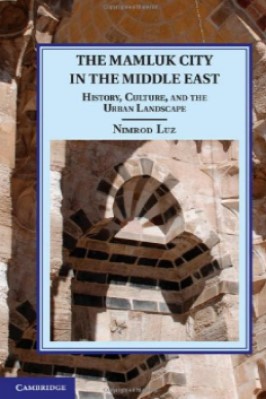The Mamluk City in the Middle East: History, Culture, and the Urban Landscape

| The Mamluk City In The Middle East |
| Nimrod Luz |
| 286 |
| |
| PDF Direct Download Link |
| Click for Hard Copy from Amazon |
THE MAMLUK CITY IN THE MIDDLE EAST – Book Sample
Mamluk City Middle East offers an interdisciplinary study of urban history, urban experience, and the nature of urbanism in the region under the rule of the Mamluk Sultanate (1250-1517). The book focuses on three less-explored but politically significant cities in the Syrian region – Jerusalem, Safad (now in Israel), and Tripoli (now in Lebanon) – and presents a new approach and methodology for understanding historical cities.
Drawing on diverse textual sources and intensive field surveys, Nimrod Luz adroitly reveals the character of the Mamluk city as well as various aspects of urbanism in the region, establishing the pre-modern city of the Middle East as a valid and useful lens through which to study various themes such as architecture, art history, history, and politics of the built environment.
As part of this approach, Luz considers the processes by which Mamluk discourses of urbanism were conceptualized and then inscribed in the urban environment as concrete expressions of architectural design, spatial planning, and public memorialization.
Urban Regional History before the Mamluks Presenting Tripoli, Safad, and Jerusalem
“What is the city,” Shakespeare’s Sicinius asks in the third act of Coriolanus and immediately answers, “but the people.”1 Thus, concisely, Shakespeare touches on the essence of the city: its human actors. Numerous students of the city have been at pains to explain its uniqueness and in what ways it differ-entiates from its rural counterpart, the village.
Ibn Khaldun argued that the city is indeed the summit of human developments. Modern theorists, such as Tonnies and Simmel, have focused our attention on the special social “spices” that make the urban world such a mesmerizing human phenomenon.
Weber, in his seminal work, emphasized time and again its social structure, political organization, and cultural complexity as the foundation stones of the city. Obviously, what makes the city a city is not its spatiality or any of its physical qualities.
There is no physical quality that might be suggested as uniquely urban that cannot be found in rural settlements. Surely, contemporary cities are gargantuan entities, and their size and density indeed differentiate them from nonurban phenomena.
But, be that as it may, these characteristics are not so easily discerned in cities prior to the modern era or, better yet, prior to the Industrial Revolution.
The things that separate the city from other social structures and transform it into such a spellbinding human accomplishment have not changed in essence since it first emerged on the world stage: its complexity, diversity, specialists, literacy, hierarchy, social stratification, and nonagrarian-based economic infrastructure are but the main issues that come to mind. Indeed, the city is an “urban drama” and the place where the human drama always reaches new heights.2
Before we delve into issues concerning the urbanism of the thirteenth to sixteenth centuries, it is relevant to bear in mind the historical (and prehistorical) roots of the city and urbanism in the region. In this chapter, I focus on the urban history and urban form of the main case studies prior to the Mamluk period.
One of the most important and intriguing evolutions in human history is surely the urban transformation. By and large, the city
To read more about the The Mamluk City In The Middle East book Click the download button below to get it for free
Report broken link
Support this Website
for websites